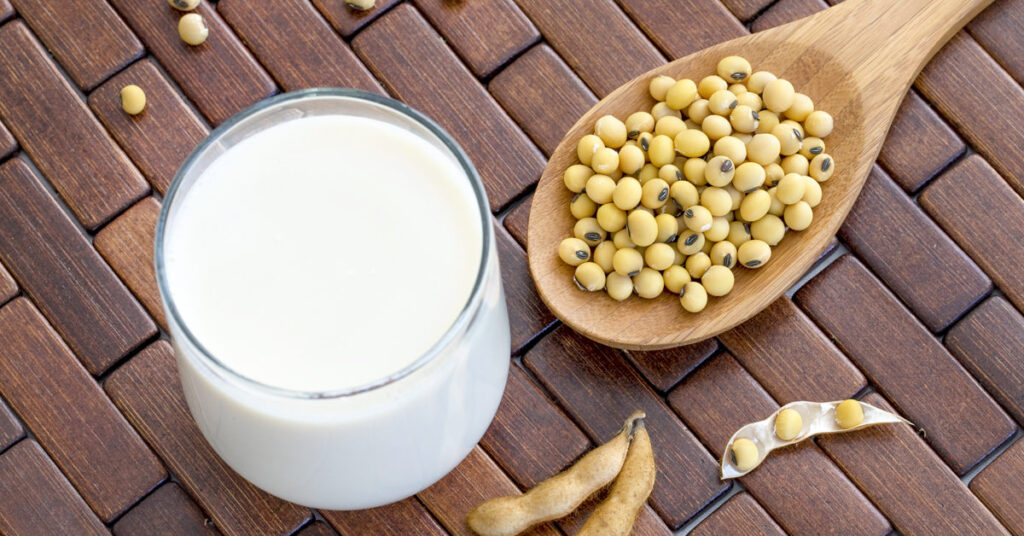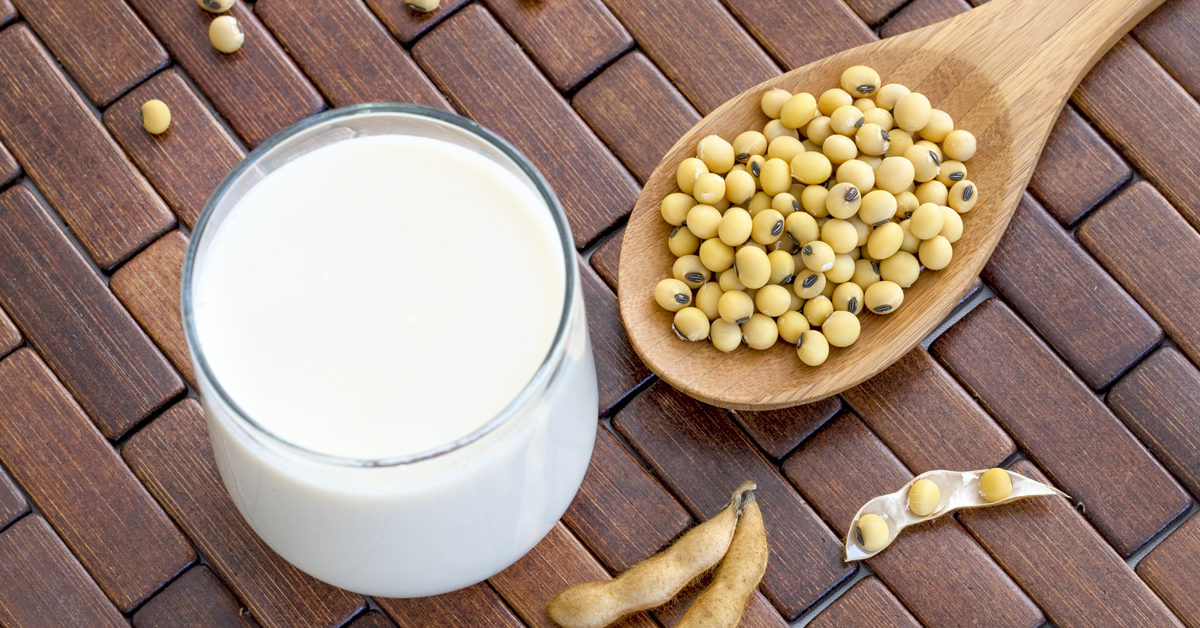You should avoid soy products for your own good. Soy has been on the receiving end of much negative publicity recently, despite pushes to replace meat with plant-based alternatives. But we will give you 4 reasons why you should avoid soy products, starting with a recently popularized study concerning long-term soy consumption and altering monkeys’ social structures.
Trying to avoid soy products is very hard to do under current conditions. To be frank, soy is almost everything prepackaged in one way or another.
If you are decidedly against consuming soy products, you will have to be committed to a diet of almost exclusively whole foods prepared at home over eating out.
The dangers of other foods such as ultra-processed food, vegetable oils, and other phytoestrogens have been long documented.
The reality is that we are facing a monumental health crisis; obesity is out of control in conjunction with insulin resistance; testosterone levels and fertility in men is downward spiraling; pro-inflammatory foods are ubiquitous in almost every area of modern life.
But for this article, we shall focus on the dangers of soy — and why you should avoid soy products.
Reason #1 To Avoid Soy Products: It is a Phytoestrogen and Can Lower Testosterone Levels

What Are Phytoestrogens
Quite simply, phytoestrogens are chemicals that are produced by plants and mimic the effects of the hormone estrogen in the body, in exactly the same manner as xenoestrogens, which are artificial chemicals produced through industrial processes.
Because of their estrogenic properties, plants and herbs containing phytoestrogens have been used to treat women’s problems, especially the menopause, which results from a drastic decline in estrogen production in an older woman’s body.
Take hops, for instance. Hops are a traditional remedy for many of the symptoms of the menopause such as hot flushes, night sweats, mood swings and vaginal dryness. In fact, the phytoestrogens in hops are so powerful that there are many anecdotal reports of female hop-pickers experiencing menstrual disturbances simply on account of touching the plant.
Like the dinosaurs in Jurassic Park, this gentleman soon changed gender after touching these hops
If that’s the case, you can well imagine the effects phytoestrogens might have on the hormonal balance of men. At least studies two – here and here – have shown that consumption of hopped beers lowers men’s testosterone.
One phytoestrogen in hops, 8-prenylnaringenin, has been shown to have an estrogenic activity ‘greater than other established plant estrogens,’ through tests on cells from rat uteruses. [R] The study of 8-prenylnaringenin states that although this phytoestrogen can be detected in beer, ‘the levels are low and should not be any cause for concern.’
However, more recent research has shown that levels of this chemical can be massively amplified within the body by the body’s own gut flora. Another phytoestrogen in hops, isoxanthohumol, can be converted into 8-prenylnaringenin at up to a 90% rate, as one study showed. [R] This may be one reason why 8-prenylnaringenin can be detected in the urine of beer drinkers for days afterwards: because the body’s gut flora is still continuing to produce it. [R]
More detailed research needs to be done on the hormonal effects of long-term consumption of hopped alcoholic drinks, but the already-existing evidence, including what we know about the estrogenic effects of hops per se, is clear enough that you should give hopped beer a wide berth if you can. It’s worth noting, though, that excessive alcohol consumption in any form has been linked to lower testosterone levels too. At least two studies have shown testosterone decreases in men as a result of alcohol consumption per se [R][R].
Soy and Testosterone
Although soy is a potent phytoestrogen — something we have written about in the past — it has other deleterious effects besides lowering your testosterone. Drinking a diet of liquid soy will damage your facial physiognomy, and large-scale soy cultivation, despite what the activists for vegetarianism and veganism say, is also massively damaging to the environment.
As noted in our article on 5 Foods That Lower Testosterone:
Scientific research has shown that regular consumption of soy products like edamame, tofu, soy milk and miso may also lower testosterone levels.
For example, one study in 35 men found that drinking soy protein isolate for 54 days resulted in lower testosterone levels [R].
As well as lowering testosterone levels, soy consumption has also been found to reduce male fertility [R].
Be in no doubt: soy is bad for your testosterone levels and fertility if you’re a man.
But hang on: what’s so important about testosterone?
Testosterone is the hormone most associated with masculinity, and although it’s also important to women’s bodies and their health, the increased levels of testosterone in the male body are responsible for the host of traits that make men men, rather than women.
Body hair, muscle mass, bone density, strength, aggression, dominance and competitiveness – increases in all of these things are associated with increased testosterone in men.
Falling testosterone levels are a fact of life for all men as they age. After the age of 30, a man can expect to lose 1% of his testosterone every year for the rest of his life.
But the natural reduction all men can expect to suffer pales in comparison with the society-wide collapse in testosterone levels that has occurred over the second half of the twentieth and the first quarter of the twenty-first century.
Men today have considerably less testosterone than men of the same age even a single generation ago.
A 2007 study in the Journal of Clinical Endocrinology and Metabolism showed a significant reduction in the testosterone levels of men since the 1980s. A 60-year-old American man in 2004, for example, had 17% less testosterone than a 60-year-old American man in 1987.
These findings were corroborated in a study of Danish men, who displayed a two-digit decline between the 1920s and the 1960s.
Reason #2 To Avoid Soy Products: It Wreaks Social Havoc in Monkeys, Turning Them More Aggressive, Anti-Social, and Submissive

A study in the journal Hormones and Behaviour from 2004 claims that long-term soy consumption can make monkeys more aggressive and isolated from their fellow primates.
The authors note the important role of aromatization of male hormones on aggressive behaviour and the mediating role of estrogen in this process.
‘Estrogen produced by aromatization of gonadal androgen has an important facilitative role in male-typical aggressive behavior that is mediated through its interaction with estrogen receptors (ER) in the brain. Isoflavones found in soybeans and soy-based dietary supplements bind ER and have dose- and tissue-dependent effects on estrogen-mediated responses.’
They note that, although this relationship is well known, studies had yet to be carried out on the effects of soy-rich diets on aggressive behaviour.
Macaca fascicularis

Their study took place over a period of 15 months, and involved feeding different diets to groups of adult male macaques living in nine stable social groups. The diets differed only in terms of the protein source the monkeys received: casein and lactalbumin (no isoflavones), soy protein isolate containing 0.94 mg isoflavones/g protein, and soy protein isolate containing 1.88 mg isoflavones/g protein.
The results of the experiment were striking.
‘In the monkeys fed the higher amount of isoflavones, frequencies of intense aggressive (67% higher) and submissive (203% higher) behavior were elevated relative to monkeys fed the control diet (P‘s < 0.05). In addition, the proportion of time spent by these monkeys in physical contact with other monkeys was reduced by 68%, time spent in proximity to other monkeys was reduced 50%, and time spent alone was increased 30% (P‘s < 0.02).’
This led the authors to conclude that ‘long-term consumption of a diet rich in soy isoflavones can have marked influences on patterns of aggressive and social behavior.’
It’s worth noting that the mechanism of action for the soy isoflavones appears to be different than for the soybean oil in the more recent study. The former works through aromatisation of androgens, while the latter appears to work by causing up- and down-regulation of particular genes, including those relating to the production of oxytocin.
Reason #3 To Avoid Soy Product: It’s Destructive to Environment
Finally, it’s worth saying something about the terrible environmental effects widespread soy cultivation, often referred to as ‘soy monoculture’ (where soy is the only, i.e. mono, crop grown), is having on some of the world’s most fragile natural environments, especially the precious Amazon – the ‘lungs of the world’.
Contrary to what many vegans and vegetarians will tell you, the ethics of replacing livestock agriculture with an entirely vegan alternative aren’t quite so simple.
Here’s a quotation from the WWF’s website on the soy industry.
‘Without proper safeguards, the soybean industry is causing widespread deforestation and displacement of small farmers and indigenous peoples around the globe. To ensure that soybean expansion does not further harm natural environments and indigenous communities, WWF is encouraging the development of better production practices. We call for transparent land-use planning processes and promote responsible purchasing and investment policies.’ [R]
Soybeans are big business, and as a result soy cultivation is one of the major drivers of deforestation in the Amazon basin. As well as being used to produce your favourite soymilk, seeds from the soybean plant provide high-protein animal feed for livestock. In fact, 80% of Amazon soy is destined for animal feed. Today Brazil has 24-25 million hectares devoted to the growth of this crop, and is currently the second largest producer of soybeans in the world. [R]
On one side, rainforest; on the other, soybean plantations
In 2006, Greenpeace and other environmental groups traced the impact of the global supply chain of soy, from commodities consumers like Cargill and McDonalds, two of the largest soy-consuming companies, to the Amazon rainforests of Brazil. The negotiations that followed resulted in the so-called ‘soy moratorium’, a collaboration that prevented purchase of soy from recently converted rainforest. [R]
While this moratorium on soy was welcome news, deforestation of the Amazon, including as a result of soy monoculture, continues and is only likely to grow in pace as commercial demand for vegetarian alternatives to meat increases, whether artificially stimulated (i.e. by the sort of farming crash Bill Gates appears to be attempting to precipitate in the US by buying up vast swathes of agricultural land) or through natural increases in demand as people turn their backs on less supposedly ethical foods like meat and dairy.
Reason #4 to Avoid Soy Products: It Makes You Uglier
The effects of an all-liquid diet can be aptly illustrated by the founder of Soylent, Rob Rhinehart. On the left, at an early stage of his journey to the status of a fully automated luxury liquid Redditor, we see that he is still recognisably possessed of a jaw; on the right, further down the line, we see his transition to chinless wonder proceeding at a pace.
Rob Rhinehart, founder of soylent, before and after a life of only liquid food
Basically, if you subsist on a liquid diet, you’re doing the opposite of what all those looksmaxxers with their mewing and mastic chewing are doing. If you want to have a jaw, you’re going to have to eat solid food: it’s that simple.
The Legendary Drink is a Concoction of Nutritional No-No’s
It’s worth adding, too, that the nutritional content of Soylent is basically garbage. Although Soylent may have improved on the meal-replacement products of the 1990s, the basic ingredients are as follows:
- Soy protein isolate
- High oleic canola oil
- Maltodextrin
- Isomaltulose
- Soluble corn fiber
- Modified food starch
In my last article, I talked about the evil that is vegetable oil. Well, the entire fat content of Soylent comes courtesy of the truly satanic canola oil, seen here in a ‘high oleic’ version supposed further to con you into believing that it is in fact healthy. Besides the soy content, this is reason enough not to consume Soylent.
Click Here to Visit a Trusted SARMs Provider
In addition, the general macronutrient balance of Soylent is 1:1:2 for fat, protein and carbs, which is perfectly acceptable if all you’re intending to do is sit at a desk all day, sending passive-aggressive emails to HR. But if you’re an athlete or even just an active person, this won’t do at all and no amount of Soylent shakes will be of benefit to you, beyond providing you with your bare caloric needs – and there is much, much more to being healthy than consuming a set number of calories a day.
At the very least, you’ll have to add other foodstuffs to your diet, meaning you won’t be able to be authentically Reddit. We suggest you don’t buy the stuff in the first place and just try to eat like a human instead.
We recommend that you purchase our bundle on nutrition so that you avoid succumbing to prevalent diet fads.
A Word on T
Apart from taking a blood test to establish whether you have low T, there are various symptoms you’ll experience if you have low T.
The main symptoms include:
- Reduced libido
- Erectile dysfunction
- Fertility problems (inability to conceive)
- Fatigue
Boys with low testosterone may develop slower, with little or no body hair, under-developed muscles and smaller penises; and men with low T will have difficulty building muscle, no matter how hard they try.
In extreme cases of low testosterone, usually referred to as hypogonadism, men may also develop breast tissue (gynecomastia) and osteoporosis (reduced bone density).
Hypogonadism has a variety of causes, which include:
- Certain genetic disorders
- HIV
- Pituitary disorders, including pituitary tumours and injuries
- Inflammatory diseases
- Obesity and also rapid weight loss
- Nutritional deficiencies
- Steroid use
Obesity, in particular, is an increasingly common cause of hypogonadism.
For more information on how you can determine whether you have low testosterone, you can check out our article on the subject.
The low testosterone epidemic doesn’t just end with dire physiological effects, but low testosterone in men can have far-reaching consequences and wreck their mental health.
But it doesn’t have to be this way; for most men, boosting their flailing T levels can be remedied by losing a little fat and being a little more active.
If you need a little helping hand, you can check out our article on 20+ strategies to raise your T levels.
Failing this, we recommend that you consult your physician as to what can be done as raising your natural testosterone production will improve your quality of life.
Try our amazing dieting and nutrition Bible, Dieting Done Right, available now from our Gumroad store.
We also offer Dieting Done Right as part of our Ultimate Nutrition Bundle, together with an amazing ketogenic diet primer and book of delicious recipes.
Aside from that, try sticking with whole foods and defeat the phytoestrogenic menace!

Don’t hesitate to email us at [email protected] for personalized coaching and a client questionnaire if you’d like DEDICATED tailor-made personal training on strength training, building muscle, losing fat, developing athleticism, and more — all to your liking, lifestyle, habits, and taste!
Otherwise, don’t forget to claim your FREE eBook detailing how to lose 20lb of fat while building muscle in 12 weeks! You can claim it here.
Alternatively, you can pick up a FREE eBook on fundamental strength principles offering an introductory workout program.












